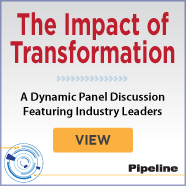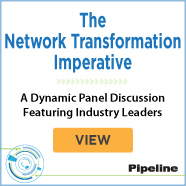Article Index for the September Issue:
September 2025 - AI & Analytics
September 2025 - AI & Analytics
AI's Future Depends on What Lies Beneath
By: Roger Cummings
» read this article
Beyond Automation: Agentic AI as the
Catalyst for Unlocking Telco Growth
By: Guy Lupo
» read this article
The Foundation for Network Monetization
Having made significant recent investments in network infrastructure, Communications Service Providers (CSPs) need to monetize such investments through new revenue streams from both existing and new sources. With consumer revenues under pressure, focus turns more to the wholesale and enterprise opportunity and, in particular, to communications-enabling applications in vertical industries (e.g., healthcare, public safety, etc.) to afford such applications greater reach or fundamentally enable new capabilities to drive higher value to their end customers…» read this article
Latency as the New Currency: Innovations
Driving the Next Frontier in AI Connectivity
By: Ivo Ivanov
» read this article
The Societal Effects of GenAI
In the last year, it has become clear that GenAI will have dramatic impacts on society. While having tremendous productivity benefits, these impacts are coming so fast, are so broad and so deep that they can produce difficulties. A taxonomy of these effects helps to clarify the situation. With this clarity, it can be seen that the GenAI effects are taking us into a difficult period of adjustment. The challenge is to maximize the productivity benefits GenAI is bringing while minimizing the difficulties in the transition…» read this article
Agents of Change: The Digital-Twin-Led
Transformation of Telco CX
By: Olgay Tas
» read this article
When Six-month Plans Meet Six-second Solutions
By: Mark Shedd
» read this article
Powering the Mid-Market Revolution
AI for UC and Better SMB CX
By: Tony Martino
» read this article
AI’s Frenetic Pace and its Impact on
Data Center Optimization
By: Tod Higinbotham
» read this article
Human-AI Cognitive Friction
Despite untold global investment in analytics and technical systems, including AI platforms, most organizations report marginal improvements in strategic decision-making performance. The fundamental problem isn't computational power, data availability, quality, or algorithmic sophistication; rather, it's the incongruent design of modern systems with the human brain, which creates cognitive friction when the brain is forced to interact with interfaces designed around deterministic precepts and technological constraints rather than cognitive science principles…» read this article
Letter from the Editor
If I’ve learned anything in my more than half a century on this planet, it’s that humans are fallible. We have issues, emotions, get sick, and must rest. Even in the best case, we’re only here for a relatively brief period and are productive for only about half of it. The world, on the other hand, has been here for billions of years, and modern civilization for thousands.While the world is still spinning, and ideally while we are still living on it, there’s a lot to do and even more to manage…» read this article
IT & Telecom Industry News
From groundbreaking AI advancements and next-gen network deployments to major cloud innovations and market-shaping acquisitions, the industry delivered a wave of transformative developments across the communications and IT sectors. The month’s top industry news stories are summarized below. To view current breaking news in real-time, visit Pipeline’s News Center, follow Pipeline on social media, or subscribe to receive our weekly industry enterprise and communications technology news summary…» read this article

















